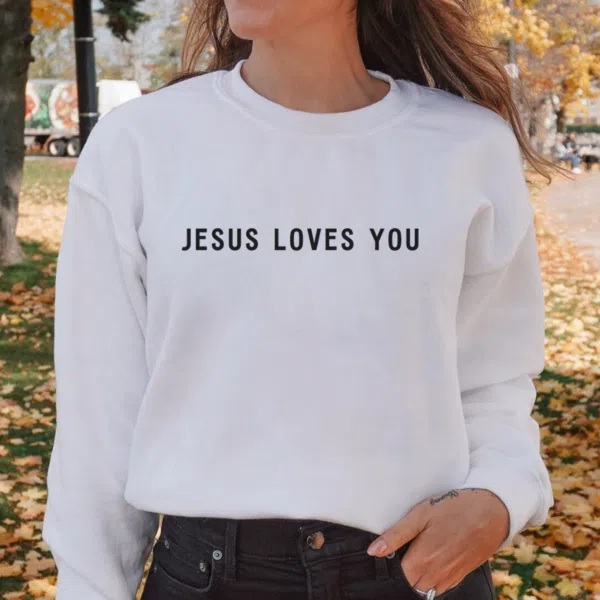For years, fashion and trendy clothing have stopped being taboo for most Christians. Thousands of real-life case studies and famous clothing brands – for and by His followers – are living proof that one can be respectful and stylish at the same time!

Cannot wait to start a brand yourself? This article is for you; keep scrolling for our expert tips on how to start a Christian clothing line of your own.
How to Start A Christian Clothing Line of Your Own? 5 Steps
Step 1. Define Your Brand’s Target Audience
Before brainstorming your designs, ask yourself this important question: “Who do I sell this to?”
So many famous Christian brands (ex: Creativity Faith, Elevated Faith, Christian Apparel Shop) have been around already; it’s hard to set yours apart if you do not even have a single clue about your demographics!
Suppose you are a Christian woman considering selling items to women. Then “Women” would be your target. From here, continue to narrow the audiences by deciding on their age ranges, hobbies, regions, etc.
Step 2. Name The Brand
Undoubtedly the most critical step! We cannot even begin to tell you the absolute importance of a relevant, impressionable name that aligns with your goals and branding messages. Without this important milestone, you cannot proceed to other marketing phases.
Choose the “.com” extension.
Simple: it’s much easier to remember than other extensions (“.co” or “.net.”).
Say, your brand is “312tees”; people will naturally type “312tees.com” on their Google search or address bar.
Avoid hyphens at all costs.
Have you discovered a perfect name – only to be disheartened that someone has already taken it? Including a hyphen (ex: 312-tees instead of 312tees) may sound tempting, but it will never be a good solution in the long run.
Why?
Most people never expect the hyphen – and will likely type your brand name without it. Hence, they still end up on the 312tees website, instead of your 312-tees!
Make it short.
Forbes’s top 100 brands all have extremely short names, and for a good reason: it’s easy to learn them by heart. Displaying these brands on varied physical/digital branding materials will be a breeze, too.
The shorter it is, the better. Keep the name below 15 characters if you can. Check out other tips here.
Step 3. Make Your Logo
Once setting the brand, it’s time to move on to your logo. There are so many design companies that you can spot them almost anywhere on every possible platform.
A good logo often charges 80$ to 300$. Some freelancers or designers may demand even more. Consider your budgets to balance quality and costs.
Step 4. Design Your Clothing Items
Let’s get down to the actual business: the product concepts. No clothing design, nothing to sell – simple as that!
Gurus in Illustrator or Adobe Photoshop already know what to do next. You will barely need any guidance from here. But for those with virtually zero experience in design, pay someone to do so for you – just like what you did with the brand’s logo.
On another note, some of the best-selling items do not even have a complex design (take a look at these Jesus T-shirts, for instance; only plain fabric and simple quotes in white fonts, yet they keep being out of stock!).
It’s easy to do the same with basic editing skills and free online tools like Canva: all you need is to choose a good template and replace the stock text with yours. Manipulate the colors and font sizes until they come out satisfactory.
Once done, export/ save the file. Remember to choose (or ask your designer to choose) PNG format at 300 DPI, 12” wide, for better printing qualities.
Step 5. Sell and Promote Your Clothes
Aside from Facebook, Instagram, and Google Ads, what other options are there? This section will list two of the best market platforms (in our opinion). Of course, you can turn to other alternatives not listed here, too.
Etsy
The go-to choice for handmade goods, Etsy allows small businesses and startups to distribute products like hand-carved artworks, self-made clothes, and more.
Still, our sincere advice is only to upload your goods here if the shirts are designed through proprietary methods. It only takes other people a few hours (sometimes even minutes) to re-create and copy your products!
Shopify
Shopify is unbeatable regarding easy usage, detailed instructions, fast-loading rates, SEO friendliness, and more.
And unlike with Etsy, you have full rights to your domain name now, which allows easier and smoother brand building without concerns about stolen ideas/ artworks.
Pros and Cons of Starting Your Own Christian Clothing Line: A Quick Rundown
Pros
- Loyal Customers: Christians can be quite devoted to their favorite brands.
- Huge Presence: Since most Christian clothing is purpose-driven, they exert major, almost irreplaceable impacts on customers’ daily lives. That’s why famous Christian clothing brands receive even more buzz and feedback than regular stores.
Cons
- Limited Niches: Christian community is already quite a small demographic compared to others. Worse, not every Christian shows interest in fashion and trendy clothing.
- Competing Values: Certain designs can be fun to some Christians and offensive to others. Careless marketing plans might completely ruin the image of your brand.
Conclusion
How to start a Christian clothing line of your own? We hope ambitious entrepreneurs can find some helpful tips from our inclusive guide.
Good luck with your future business! And should you search for more expert advice, we are all ears.





















